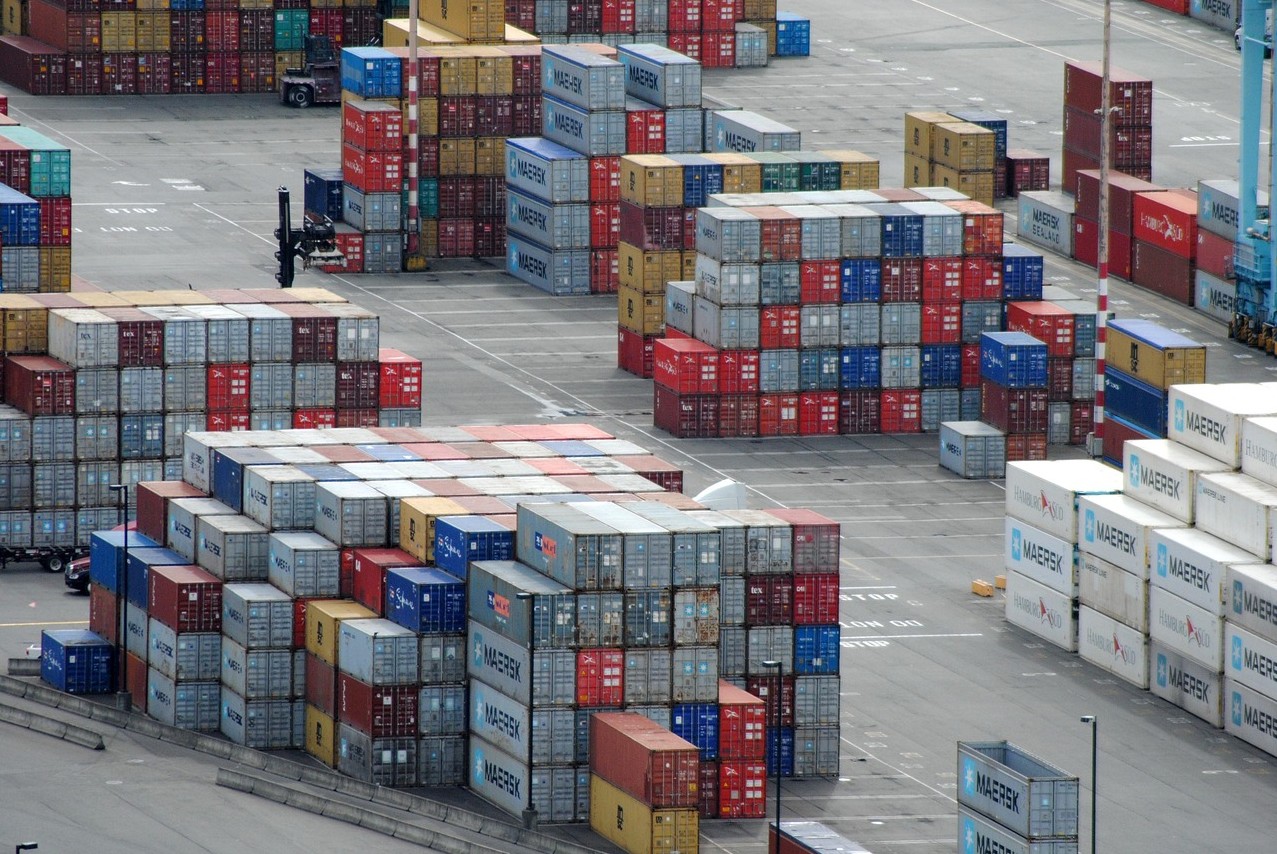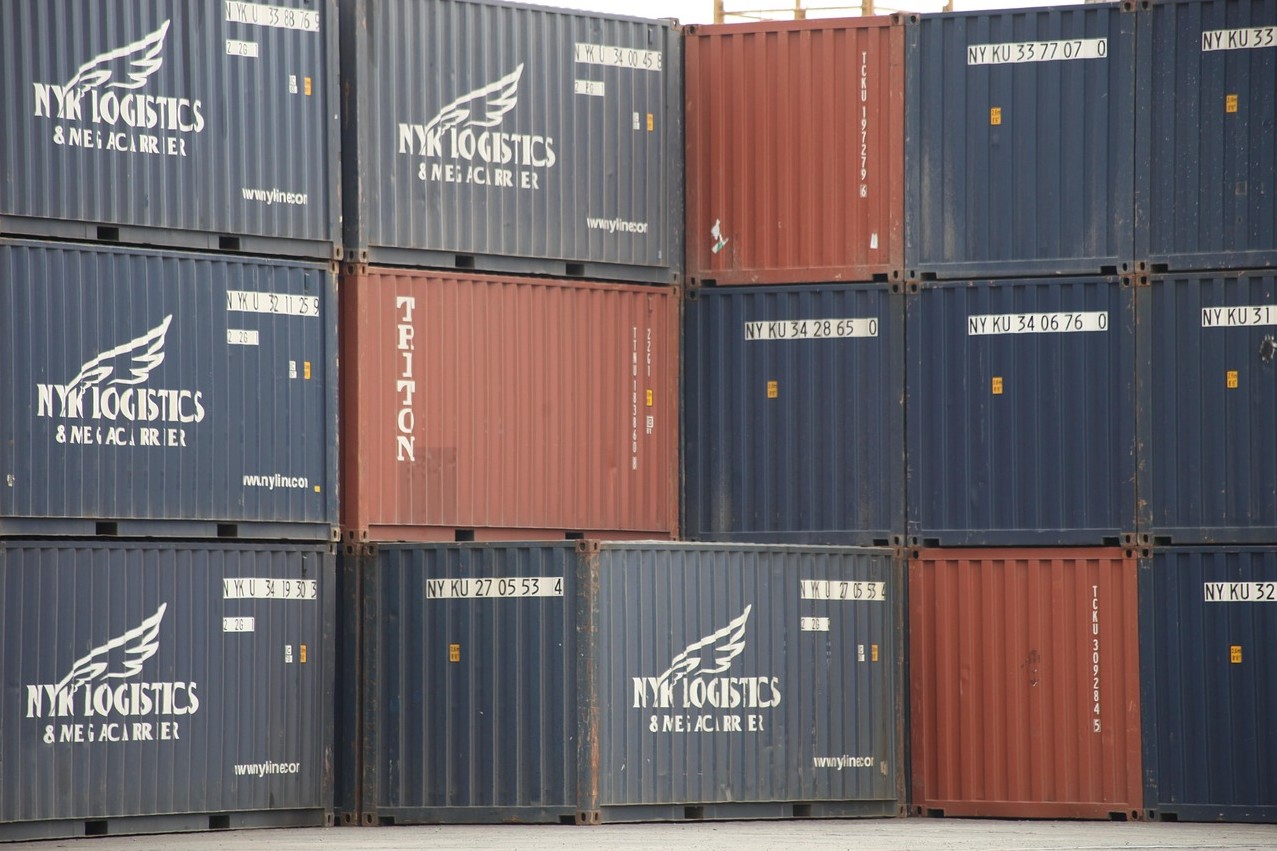Ultimate Guide to Shipping Container Sizes and Types
Shipping containers seem like big metal boxes, but they’re so much more than that: they’ve carried everything from coffee beans to cars across the seas, and now they are even used as offices, homes, and storage units. The size and type of the container matter, and you need to know what exactly to choose, so check out our ultimate chart.

Common Shipping Container Sizes
Common shipping container sizes include:
- 20ft containers;
- 40ft containers;
- 40ft high cube containers;
- 10ft containers;
- specialized containers (e.g., 45ft high cube).
Take a look at this table to better understand these containers’ dimensions:
| Container type | External dimensions (L x W x H) | Internal dimensions (L x W x H) |
| 20ft container | 20′ x 8′ x 8’6″ (6.06m x 2.44m x 2.59m) | 19’4″ x 7’8″ x 7’10” (5.90m x 2.34m x 2.39m) |
| 40ft container | 40′ x 8′ x 8’6″ (12.19m x 2.44m x 2.59m) | 39’5″ x 7’8″ x 7’10” (12.03m x 2.34m x 2.39m) |
| 40ft high cube container | 40′ x 8′ x 9’6″ (12.19m x 2.44m x 2.90m) | 39’5″ x 7’8″ x 8’10” (12.03m x 2.34m x 2.69m) |
| 10ft container | 10′ x 8′ x 8’6″ (3.05m x 2.44m x 2.59m) | 9’2″ x 7’8″ x 7’10” (2.80m x 2.34m x 2.39m) |
| 45ft high cube container | 45′ x 8′ x 9’6″ (13.72m x 2.44m x 2.90m) | 44’5″ x 7’8″ x 8’10” (13.55m x 2.34m x 2.69m) |
Consider both external and internal dimensions to ensure your cargo fits perfectly.
Standard Container Type
A standard container type is a standardized one in global shipping due to its simple design and ability to adapt to different kinds of cargo. You’ll find standard new and used standard containers in two sizes:
- 20ft container (external): 20 feet long, 8 feet wide, and 8 feet 6 inches tall. Inside, you get about 19 feet 4 inches of usable length;
- 40ft container (external): 40 feet long, 8 feet wide, and 8 feet 6 inches tall, with a usable interior space of roughly 39 feet 5 inches in length.
Both options are 8 feet wide and have a slightly shorter interior height due to the container walls and floor thickness. They are made from steel or aluminum to withstand harsh weather and rough handling and sealed tight with locking mechanisms to keep cargo safe during its long journeys.

High Cube Container Type
A high cube container type offers extra height to ship and store large cargo:
- external dimensions: same length and width as a standard container (20 ft, 40ft, or 45ft long, 8 feet wide), but with one big difference — it’s 9 feet 6 inches tall.
- internal dimensions: 8 feet 10 inches of vertical space.
The added height lets you stack bulky or awkwardly shaped items that need extra height like furniture, lighting, and certain types of machinery. Like standard containers, high cubes are made from heavy-duty materials like steel or aluminum to weather the harshest sea and land conditions, and that’s why they can also be repurposed into homes, office pods, trendy cafes, and art spaces.
Special Types of Shipping Containers
Shipping containers aren’t just boring steel boxes that all look the same, there’s a whole lineup of special kinds:
- Refrigerated containers (reefers). Due to them, ish, fruits, vaccines, and other temperature-sensitive goods stay fresh as they travel thousands of miles. Equipped with built-in refrigeration systems, these containers keep cargo chilled or frozen.
- Open-top containers. Open-top containers accommodate cargo that is too tall to fit in a standard container. You can load cargo through their removable tarp or steel roof using cranes.
- Open-side containers. They come with doors along one entire side, in addition to the standard end doors, allowing for quick loading and unloading of larger or awkwardly shaped items that are difficult to maneuver through standard container doors.
- Flat rack containers. Their construction is built without sidewalls or a roof, so you can load items that would never fit into a standard container.
- Tank containers (tankers). These cylindrical tanks, encased in steel frames and regulated by specialized ISO tank container certifications, are built for safety and to prevent leakage or contamination during the transportation of chemicals, oils, and even wine.
- Insulated containers. Similar to reefers but without the active cooling system, insulated containers help maintain a consistent internal temperature for transporting temperature-sensitive cargo, like medicines or certain food products.
- Double-door containers. Convenient doors on both ends of this container allow for faster loading and unloading of certain equipment and materials that need frequent access.
Specialized shipping containers solve logistics and transportation dilemmas to ensure even the most complicated shipments arrive safely.

Choosing the Right Shipping Container Type
It isn’t difficult to choose the right shipping container, but this process requires thinking through a few key factors:
- Your cargo type determines the type of container you need. If you’re shipping fresh food, medicines, flowers, or other items that need a controlled climate, buy a refrigerated or insulated container. Large machinery, vehicles, construction materials, or other oversized cargo fit in a flat rack or open-top container. Sensitive goods that need ventilation will do well in a ventilated container. Tank containers are designed to transport liquids like wine, chemicals, or oil. But if you want to transport common goods like furniture, textiles, or household items, a standard new or used 20ft or 40ft container or a high cube one will get the job done.
- Factor in dimensions: 20ft containers are perfect for general shipments, 40ft — for large loads, and high cube containers — for oversized goods.
- Consider special features like quick access, security, mobility vs. stationary use, budgeting, renting vs. buying, repurposing containers, etc.
- Ensure your container meets ISO certifications and hazardous goods compliance.
The container you choose should work with your goods, not against them. The trick is in matching the container’s features to your priorities, so whatever you’re moving or building feels like it was made just for you.
Conclusions
Shipping containers are not simple metal boxes — they are solutions, each one designed to solve a certain task, and once you understand your cargo, its requirements, and your budget, you’re ready to choose one. Don’t think just about shipping your goods to the final destination — you should make sure they arrive exactly as planned, and it’s possible with one of the container types listed in our chart.
What are the most common shipping container sizes, and how do they differ?
The most common shipping container sizes are 20ft (8 feet wide, 8.6 feet tall) and 40ft container (8 feet wide, 9.6 feet tall). These sizes differ in the amount of cargo they can hold and are often chosen based on the volume and weight of the goods being shipped.
When is it best to use a high cube container over a standard container?
It’s best to use high cube containers when you need to ship tall or bulky cargo like machinery or when you simply want to stack goods more efficiently. You can also convert them into offices or homes because of the added headroom.
What are refrigerated containers?
Refrigerated containers, or reefers, are specialized shipping containers equipped with built-in cooling systems for transporting perishable goods, such as fresh produce, seafood, dairy, or pharmaceuticals that need a controlled temperature range.
What is the most popular shipping container size?
The 40-foot standard container is the most popular shipping container size due to its ample space and versatility in fitting most types of cargo.
What are the different types of 40ft containers?
The different types of 40ft containers are standard, high cube, refrigerated, flat rack, open-top, and open-side.

 Vanessa Joy
Vanessa Joy